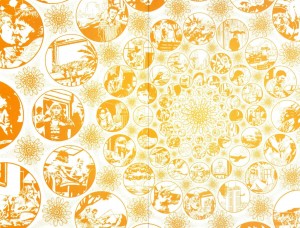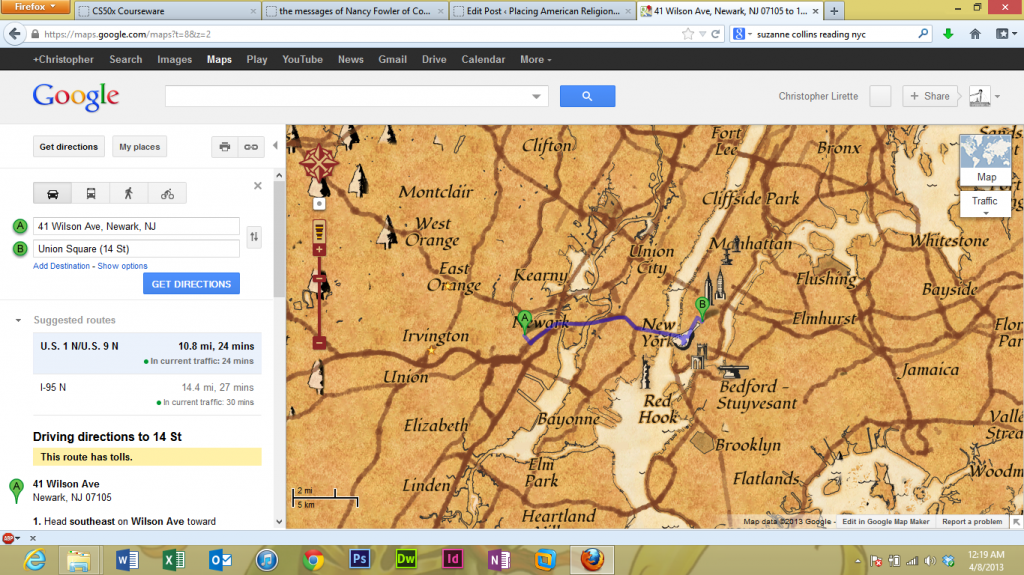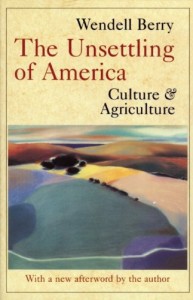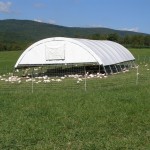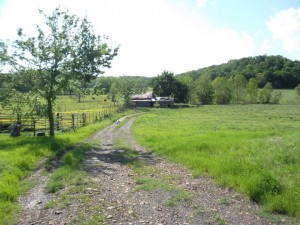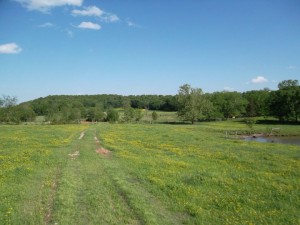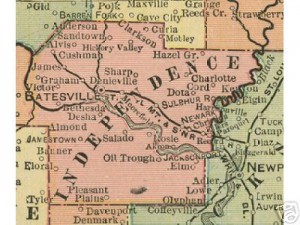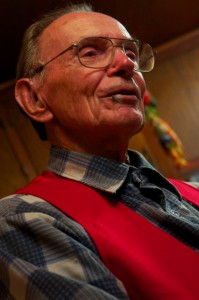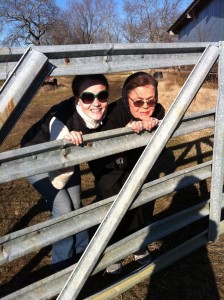“…[I]s it possible to recover the power of sacred space for those today who have forgotten hierophanies and all signs of the sacred”(2001: 23)? Landscapes of the Sacred: Geography and Narrative in American Spirituality is Belden C. Lane’s way of answering ‘Yes, indeed. Mature re-enchantment is possible.’ Lane argues that moderns can move through uncritical naiveté and skepticism about the sacredness of particular places and finally “rediscover[] wonder in the deepening of discourse” (2001: 42) about particular geographies. Ritually practicing spatial narratives can bring people to spiritual maturity, to the peace of finding their existential dwelling place. Lane claims such practices keep the human imagination open to being surprised by the transcendent. The end of these journeys within sacred space “[is] ultimately a new way of seeing, rather than the place seen” (2001: 12).
But moderns might beg another line of questions: Is it actually necessary to recover the power of sacred space? Beyond Lane’s own clear enjoyment of spatial spirituality, what is the social human good of an individual’s feeling “placed in a mystery” (2001: 23)? Why is a new mystification of places so very important to, say, political stability or some other commonly recognized social good? Lane’s assumption that ordinary places ought to be looked upon as masks of the sacred (2001: 69-72) proceeds from his personal belief in the incarnation of Christ. He borrows Sir Edwyn Hoskyns’ affirmation that “ ‘at the supreme point, at Jerusalem where the Lord was crucified, the whole world—please notice, the whole world—comes back to us in all its vigorous energy, shining with the reflected glory of the God who made it and us’” (2001: 11). While I am sympathetic to his Christian convictions, a more general humanist argument for the narrative enchantment of places also presents itself.
A humanist might begin by asking, “what happens to human relations when the ordinary world and its ordinary places are understood in merely factual terms? What happens socially when the human imagination allows access only to topoi, “mere location[s],…measurable, quantifiable point[s]”? Topoi are known in terms of data, not in terms of memories and hopes; they have no narrative structures; they have no normative aesthetic or eschatological goals. Thus, topoi cannot provide people with a choreography for relating to others (2001: 39); they do not—to use Arjun Appadurai’s less transcendent term from Modernity at large: Cultural Dimensions of Globalization—provide a neighborhood where social actions are patterned by “certain kinds of agency, sociality, and reproducibility”(1996: 178). Thus, topoi cannot provide persons with a sense of social belonging.
Yet, humans desperately need this sense of sacred belonging, and desperate people will try extreme measures to achieve it. In Terror in the Mind of God, Mark Juergensmeyer presents religious terrorism as a strategy for consecrating sacred space and defining appropriate social roles in the midst of secular modern anomie: “Why is the location of terrorist events—of performance violence—so important? [Because] the control of territory defines public authority, and ethnic-religious groups have historically gained their identity through association with control over particular places.”(2003: 134) Furthermore, religious violence declares certain spaces as war zones, a morbidly handy designation “in which individuals know who they are [soldiers and martyrs], why they have suffered, by whose hand they have been humiliated, and at what expense they have persevered. The concept of war provides cosmology, history and eschatology…” (2003: 158). Ironically, imagining the world caught up in a holy cataclysm provides some people with a sense of moral order; it provides a blueprint for acting in particular locale.
In answer to the humanist question above, Lane and Juergensmeyer both suggest that people inevitably apply their imaginative energy to re-enchanting places; they inevitably work to imbue places with deep significance. But this imaginative labor produces a vast array of social forms, some clearly more life-giving than others. From a secular humanist perspective, Lane’s form of critical, spatial, religious imagination can be broadly valued because it keeps open the possibility of peaceful dissent, of discourse rather than dominance, as the model for spatial relations.
P.S. Just for fun I’ve included a poem by Wendell Berry which has little to do with my post but resonates with Lane’s project.
A Vision
If we will have the wisdom to survive,
to stand like slow-growing trees
on a ruined place, renewing, enriching it,
if we will make our seasons welcome here,
asking not too much of earth or heaven,
then a long time after we are dead
the lives our lives prepare will live
here, their houses strongly placed
upon the valley sides, fields and gardens
rich in the windows. The river will run
clear, as we will never know it,
and over it, birdsong like a canopy.
On the levels of the hills will be
green meadows, stock bells in noon shade.
On the steeps where greed and ignorance cut down
the old forest, an old forest will stand,
its rich leaf-fall drifting on its roots.
The veins of forgotten springs will have opened.
Families will be singing in the fields.
In their voices they will hear a music
risen out of the ground. They will take
nothing from the ground they will not return,
whatever the grief at parting. Memory,
native to this valley, will spread over it
like a grove, and memory will grow
into legend, legend into song, song
into sacrament. The abundance of this place,
the songs of its people and its birds,
will be health and wisdom and indwelling
light. This is no paradisal dream.
Its hardship is its possibility.

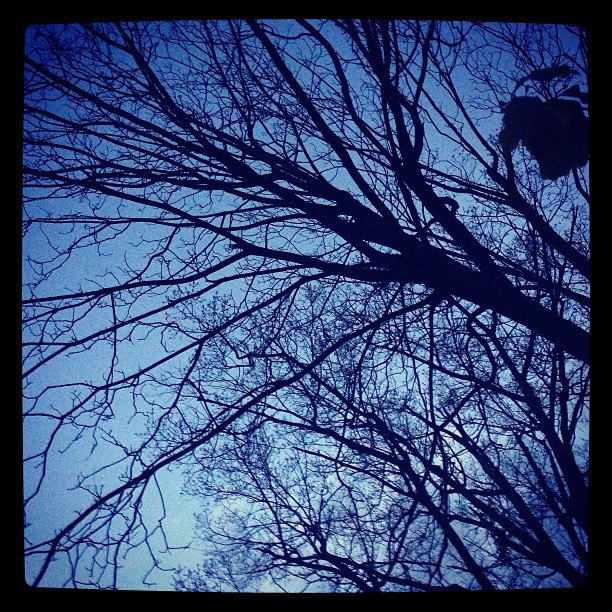 wisdom, one place of constant reflection, as I read Basso’s account, is the canopy of trees behind my house. I step outside the kitchen to my favorite spot on the back deck as soon as the weather allows and take in the canopy as often as possible. If it is early enough in the morning, light illuminates and dances upon and even changes the trees, telling its daily story with each sunrise. Sometimes the leaves are rustling and other times they are still. A woodpecker is particularly fond of one of the trees and spends its day pecking away as soon as it is warm enough for its return.
wisdom, one place of constant reflection, as I read Basso’s account, is the canopy of trees behind my house. I step outside the kitchen to my favorite spot on the back deck as soon as the weather allows and take in the canopy as often as possible. If it is early enough in the morning, light illuminates and dances upon and even changes the trees, telling its daily story with each sunrise. Sometimes the leaves are rustling and other times they are still. A woodpecker is particularly fond of one of the trees and spends its day pecking away as soon as it is warm enough for its return. The canopy has been my companion as I fell in love underneath it, and as I tried to make sense of the love I found. A bird has “taken liberties” from this canopy leaving me with a bit of a mess on my shirt, and I’ve been known to sit under an umbrella to avoid other showers (these a bit more welcome, at least.) My partner and I have invited people into our lives around the table under the canopy. Sometimes guests notice this great assortment of trees and other times they do not. Either way, I feel like they are nurtured by it.
The canopy has been my companion as I fell in love underneath it, and as I tried to make sense of the love I found. A bird has “taken liberties” from this canopy leaving me with a bit of a mess on my shirt, and I’ve been known to sit under an umbrella to avoid other showers (these a bit more welcome, at least.) My partner and I have invited people into our lives around the table under the canopy. Sometimes guests notice this great assortment of trees and other times they do not. Either way, I feel like they are nurtured by it.